Precision Matters: Discover the Most Accurate Blood Pressure Monitor
Did you know that nearly half of adults in the United States suffer from high blood pressure (BP)? It’s a shocking statistic that highlights the importance of monitoring and managing this health condition. Whether you’ve been diagnosed with hypertension or simply want to keep an eye out for your cardiovascular well-being, finding the best blood pressure monitor (BPM) is crucial.
In this article, we will guide you to the best device for accurate blood pressure measurements. Get ready to dive into the world of blood pressure monitors and discover the tools that will empower you to take control of your cardiovascular health.
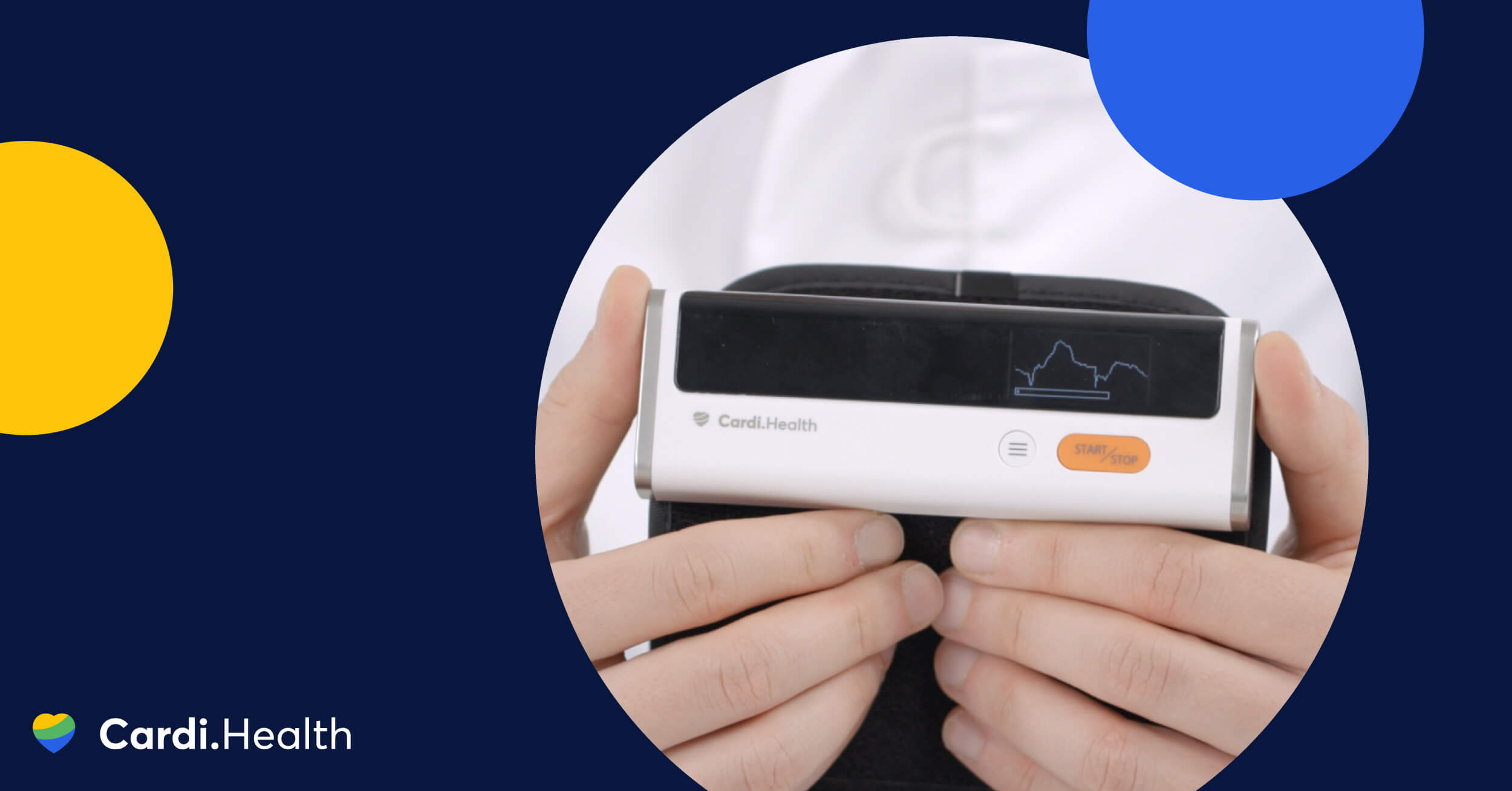
Master your heart health now
Take part in our 60sec quiz and get a heart health plan tailored just for you.
Contents
Key Features to Look for in an Accurate Blood Pressure Monitor
When it comes to choosing accurate blood pressure monitors, there are several essential features you should keep in mind:
- Validation and certification
- Irregular heartbeat detection
- Multiple BP readings and averaging
- Bluetooth and mobile connectivity
These features not only ensure precise readings but also contribute to a smooth and reliable monitoring experience. Let’s explore each of these features in detail and understand their significance in obtaining accurate BP readings.
Validation and certification
Making sure that blood pressure monitors are accurate and dependable is crucial. There are two main types of validation processes for a blood pressure monitor: international validation and clinical validation. These processes help ensure that the monitors meet specific standards and provide reliable measurements.
During international validation, the monitor’s accuracy is checked using specific rules. Clinical validation which looks at how well the monitor works in real-life situations at the doctor’s office or hospital.
Two internationally recognized registries, STRIDE BP and Medaval, are available for verifying the validation status of a BP monitor. To conduct a search in either registry, it is necessary to know the name of the manufacturer and the model of the monitor. This essential information should be clearly marked on the box or case of the BP monitor.
Certification, on the other hand, is a way to confirm if the monitor meets certain quality and safety standards set by authorities. These processes are important because they make sure that the blood pressure monitor has been carefully tested and meets the necessary accuracy standards.
To ensure certification, check if the blood pressure monitor has validation from reputable organizations like the AHA, ESH, or similar. If you’re in the United States, verify FDA approval by searching the specific model or brand on the official FDA website, as well as in the US Blood Pressure Validated Device Listing (VDL).
By choosing a blood pressure monitor that is validated and certified, you can feel confident that the measurements it provides are accurate and that you always get consistent readings. This allows you to make informed decisions about managing your health and choosing the best blood pressure monitor.
Irregular heartbeat detection
Detecting irregular heartbeats, also known as arrhythmias, is crucial for a blood pressure monitor as it can provide important insights into a person’s cardiovascular health. According to one study, monitoring and detecting irregular heartbeats alongside BP measurements can help identify potential heart issues and encourage people to seek further medical evaluation and treatment.
Irregular Heartbeat Detection is a commonly found feature in many blood pressure monitors. However, to know if the BP has this feature, check the product packaging, manual, or the manufacturer’s website for information on the features of the blood pressure monitor. Look for specific mention of “Irregular Heartbeat Detection” or “Arrhythmia Detection” among the listed features.
Smart blood pressure monitors with the Irregular Heartbeat Detection feature may vary in price depending on the brand, model, and additional features included.
Multiple readings and averaging
Taking multiple readings is important for a blood pressure monitor because it provides more accurate and reliable health data about an individual’s blood pressure. Blood pressure can fluctuate throughout the day for several reasons, including physical activity, stress, and even the time of day.
A blood pressure monitor with multiple readings can capture the dynamic nature of blood pressure, provide a more accurate average measurement, and help identify patterns or anomalies that may require further investigation or intervention.
Bluetooth and mobile connectivity
Bluetooth and mobile connectivity offer several advantages when integrated into a blood pressure monitor:
- Convenience and accessibility: Bluetooth and mobile connectivity allow users to easily access their BP data, view trends, and track their progress conveniently through dedicated mobile applications.
- Real-time monitoring: With Bluetooth and mobile connectivity, the readings can be transmitted instantly to your device for immediate feedback and timely intervention or adjustment.
- Data management and analysis: Mobile applications often provide features like charts, graphs, and trend analysis, allowing users to gain insights into their blood pressure patterns and track their progress more effectively.
- Remote monitoring and sharing: Bluetooth connectivity allows users to share their blood pressure readings at the doctor’s office or with family members remotely. This is beneficial for individuals who require regular monitoring and consultation.
- Improved compliance and motivation: Mobile connectivity features, such as reminders and notifications, can help users build a blood pressure monitoring routine. Regular reminders can improve engagement with monitoring schedules and medication regimens, leading to better overall blood pressure management.
Bluetooth and mobile connectivity also allow integration with other health and fitness apps. Many mobile applications that accompany a Bluetooth-enabled blood pressure monitor integrate with other health and fitness apps. This allows users to have a comprehensive view of their overall health and well-being, as they can track BP alongside other health metrics like heart rate, physical activity, sleep patterns, and nutrition.
Just like with other features, to determine if a blood pressure monitor has Bluetooth and mobile connectivity, look for information provided by the manufacturer or retailer. The price may vary depending on the number of features the monitor has.
5 Most Accurate Blood Pressure Monitors
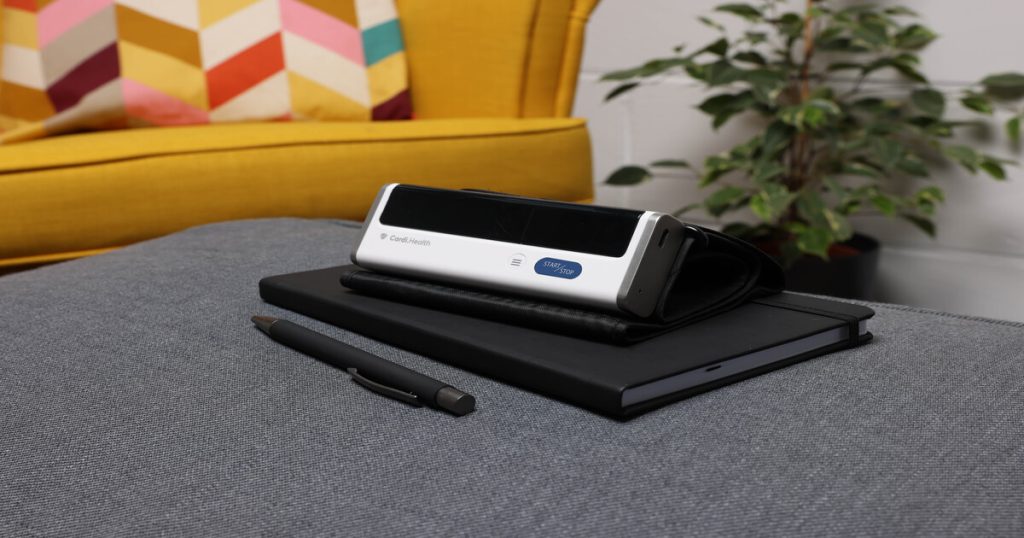
Now that you know what to look for in a blood pressure monitor, let’s explore the top 5 most accurate and best blood pressure monitors and their features.
Cardi Health Blood Pressure Monitor
The Cardi Health Blood Pressure Monitor is designed for patients, doctors, and caregivers, to provide accurate BP readings on demand. Intuitive and easy to use, the Cardi Health BP Monitor tracks your vitals and helps you understand how your heart health is changing over time so you can enjoy a fulfilling lifestyle with your loved ones.
Cardi Health’s smart blood pressure monitor is cleared by the FDA. It stores multiple readings in itself and in the application.
The Cardi Health app is also a great addition to your blood pressure management. You can find your average blood pressure readings, track your heart rate, and monitor your cholesterol. It also creates personalized meal plans to help you manage your weight, helps you stay on top of your medications, and provides educational insights on all things heart-related.
Cardi Health also provides a 14-day money-back guarantee and a 12-month warranty with any purchase.
Pros:
- Accurate BP readings
- Wireless connection with the Cardi Health app for limitless data storage
- Up to 500 measurements between charging
- One-size-fits-all and lightweight (240g/0.53lb)
Cons:
- Only available for purchase in the US
- Requires the Cardi Health app and monitor to be simultaneously active for synchronization; otherwise, manual data entry is necessary
Price: $90
Omron Platinum Blood Pressure Monitor
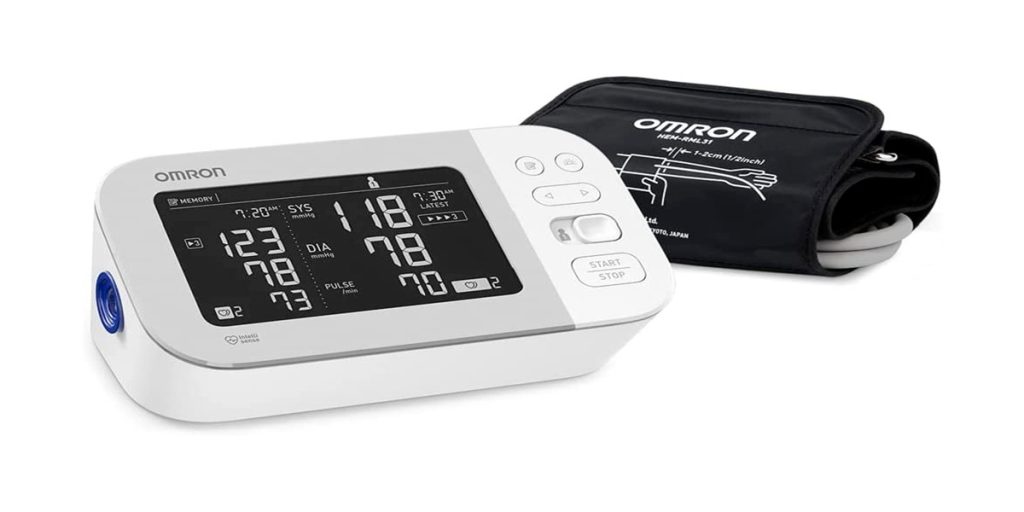
The Omron Platinum Blood Pressure Monitor is known for its accuracy and advanced features. It is an upper arm blood pressure monitor that provides precise measurements of both systolic and diastolic blood pressure, as well as pulse rate.
The majority of Omron’s devices meet the criteria for US Blood Pressure Validated Device Listing (VDL). Their Platinum BP is one of them.
Pros:
- Accurate BP readings due to Omron’s TruRead and Dual Sensors
- Bluetooth connectivity with the Omron Connect app
- Large, clear display
Cons:
- Users may find the menu and setting options on the device complex and require a learning curve to use all the features
- The Bluetooth connectivity and data tracking features rely on the Omron Connect app, so you may occasionally experience connectivity issues or difficulty synchronizing data with the app
Price: $84
Omron Upper Arm Gold Blood Pressure Monitor
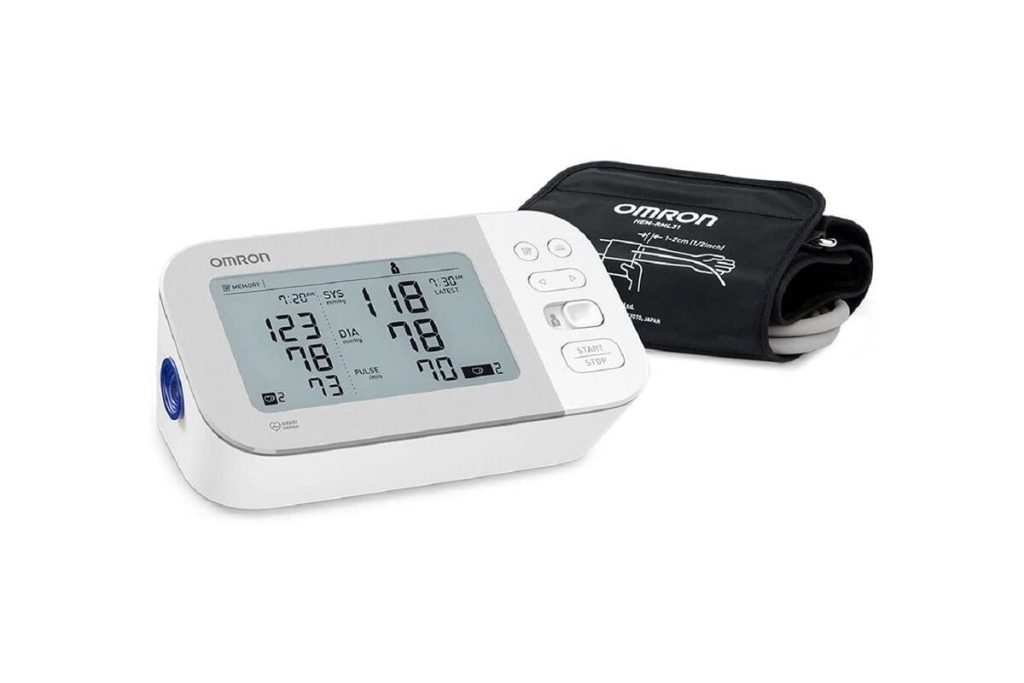
Omron Gold Upper Arm Blood Pressure Monitor is a reliable and convenient blood pressure monitoring solution for at-home use. Powered by OMRON Advanced Accuracy technology, this monitor ensures precise and consistent readings.
The majority of Omron’s devices meet the criteria for US Blood Pressure Validated Device Listing (VDL). Their Gold Wireless Upper Arm blood pressure monitor is one of them.
Pros:
- Omron-exclusive technology minimizes the impact that breathing and movements have on BP reading results
- Dual LCD display, allowing to compare current readings to previous readings
- Two-user mode
Cons:
- Users may find the Bluetooth feature difficult to navigate
- Some people reported the screen being too dark and hard to read
Price: $78
Withings BPM Connect
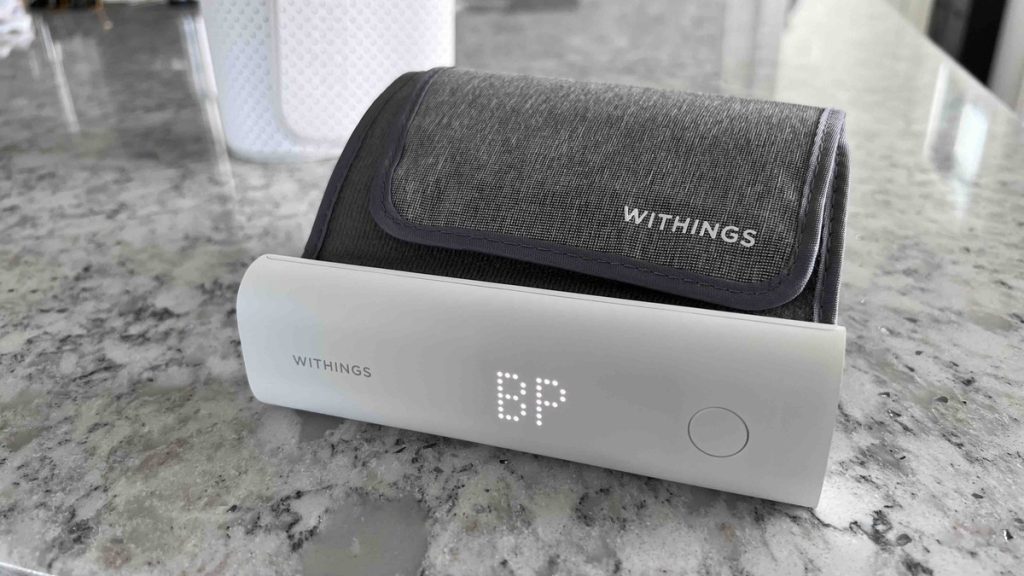
Withings BPM Connect is a popular blood pressure monitor known for its convenience and connectivity. This upper arm device allows for easy and accurate measurement of systolic blood pressure and diastolic blood pressure, as well as heart rate.
This blood pressure monitor is clinically validated; however, it does not have an irregular heartbeat detection feature.
Pros:
- It connects wirelessly to your smartphone or tablet via Bluetooth, so you can easily sync and track your readings with the Withings Health Mate app. This is also helpful if you want to show your readings at the doctor’s office.
- Results are easy to understand with clear feedback based on recommendations from the European Society of Hypertension (EU) and the American Heart Association (US)
- The BPM Connect supports multiple users profiles, allowing multiple individuals to track their BP readings separately
Cons:
- To use all of the device’s features and access advanced tracking data, you need to rely on the Withings Health Mate app, which may not be suitable for users who prefer a standalone device without smartphone integration
- Some users have reported occasional connectivity issues or difficulties syncing the BPM Connect with the app
Price: $130
iHealth Track Blood Pressure Monitor
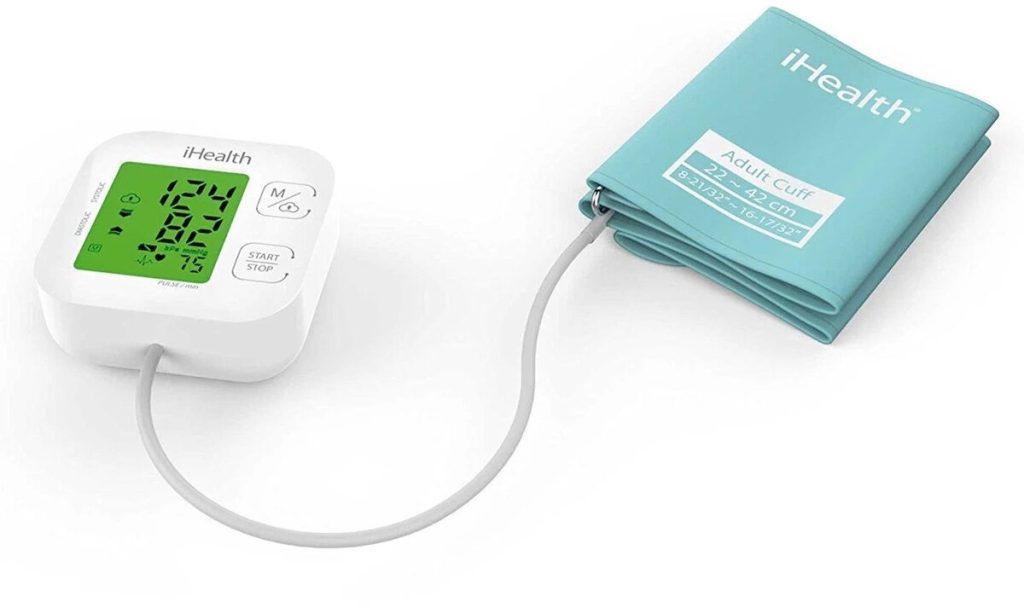
The iHealth Track Blood Pressure Monitor is a compact and user-friendly device designed for convenient blood pressure monitoring. It is an upper arm monitor that provides accurate systolic and diastolic readings, as well as heart rate.
It is clinically validated and cleared by the FDA. Although it does not include a multiple readings feature, it detects irregular heartbeat.
Pros:
- Good quality for a budget-friendly price
- Wireless connection to your smartphone via Bluetooth, allowing you to sync and track your measurements using the iHealth MyVitals app
- A clear and easy-to-read LED display, making it simple to view your readings
Cons:
- Some users have reported that the cuff size of the iHealth Track Blood Pressure Monitor may not fit individuals with larger or smaller arms
Price: $50
Types of Blood Pressure Monitors
When it comes to blood pressure monitors, there are several types available on the market: manual, automatic, wrist, and hand blood pressure monitors. Each type has its own advantages and limitations, so it’s important to consider individual needs and consult with healthcare professionals when choosing the best blood pressure monitor for you.
Let’s explore each type of blood pressure monitor in more detail to understand its unique features and considerations and to see which is the best blood pressure monitor for you.
Manual blood pressure monitors
A manual blood pressure monitor is a traditional type of blood pressure measuring device that requires manual inflation and auscultation. To measure BP using a manual monitor, a healthcare professional or an individual needs to use a stethoscope to listen to the Korotkoff sounds while slowly releasing the pressure from the cuff.
In one publication, the accuracy and ability to confirm hypertension are named as the main advantages of manual monitors. The ability to auscultate the Korotkoff sounds directly can provide a more precise blood pressure reading. However, it requires expertise and practice to correctly identify the sounds and determine accurate readings.
On the other hand, manual monitors can be more difficult for untrained individuals to use accurately, leading to potential measurement errors. In addition, manually inflating and deflating the arm cuff can be time-consuming and may require the assistance of another person.
In terms of accuracy, a manual blood pressure monitor can provide reliable readings when used correctly. However, it may be more susceptible to human error than an automated monitor such as an upper arm or wrist monitor.
Automatic blood pressure monitors
Automatic BP monitors are widely used as home blood pressure monitors. They utilize oscillometric technology to measure BP. Instead of manual inflation and auscultation, automatic monitors automatically inflate and deflate the cuff to obtain a blood pressure reading.
In the same article above, a key advantage of automatic monitors is their ease of use. They are designed to be user-friendly for home blood pressure monitoring without the need for specialized training. The automated process eliminates the need for manual inflation and listening for Korotkoff sounds, making it more accessible to a wider range of users.
There are, however, a few drawbacks to consider. Automatic monitors can be more expensive than manual monitors, and some individuals may find the inflation and deflation process uncomfortable or noisy. Additionally, reliance on batteries or power sources may be a limitation in certain situations.
However, while automated monitors generally provide accurate readings, factors such as cuff fit and positioning, body movement, and device calibration can impact their accuracy. It is essential to follow the manufacturer’s instructions and ensure proper cuff placement for reliable measurements.
Wrist blood pressure monitors
Wrist blood pressure monitors are a type of blood pressure measuring device that is worn on the wrist. These monitors use oscillometric technology to measure blood pressure. To obtain a reading, the cuff is wrapped around the wrist, and the monitor automatically inflates and deflates to determine the blood pressure values.
One advantage of wrist monitors is their portability and convenience. They are compact and lightweight, making them easy to carry and use on the go. Additionally, the wrist design eliminates the need for cuff placement on the upper arm, which may be more comfortable for some individuals. These qualities make them a good choice for home blood pressure monitors.
However, there are some things to consider when using a wrist monitor. Proper positioning of the cuff at the heart level is crucial for accurate measurements. Incorrect positioning or movement during measurement can lead to inaccurate readings.
Compared to upper arm monitors, wrist monitors may be less accurate overall. Factors such as the distance between the heart and wrist and the sensitivity to wrist position can affect the reliability of readings.
Arm blood pressure monitors
An arm blood pressure monitor, also known as an upper arm monitor, is a widely used type of blood pressure measuring device. These monitors consist of a cuff that is wrapped around the upper arm and a digital display unit. To obtain a blood pressure reading, the cuff is inflated to temporarily cut off blood flow and then slowly deflated while measuring the pressure.
An upper arm monitor provides consistent and precise blood pressure readings when used correctly. It is designed to accommodate a wide range of arm sizes, ensuring a proper fit for accurate measurements with a comfortable upper arm cuff. Additionally, many arm monitors come with advanced features like irregular heartbeat detection, multiple users profiles, and memory storage for tracking blood pressure trends over time.
While arm monitors offer accurate measurements, there are a few things to keep in mind. Proper positioning of the cuff is important, and it should be placed at heart level for optimal results. Inaccurate positioning or movement during measurement can affect the reliability of readings.
Arm blood pressure monitors, specifically upper arm monitors, are generally considered to be highly accurate compared to other types of blood pressure monitors. For example, compared to wrist monitors, arm monitors are typically more accurate.
Factors such as the proximity of the cuff to the heart and the stability of the arm during measurement contribute to higher accuracy. Wrist monitors can be affected by wrist positioning and movement, which can affect the reliability of readings.
Factors Affecting Blood Pressure Monitor Accuracy
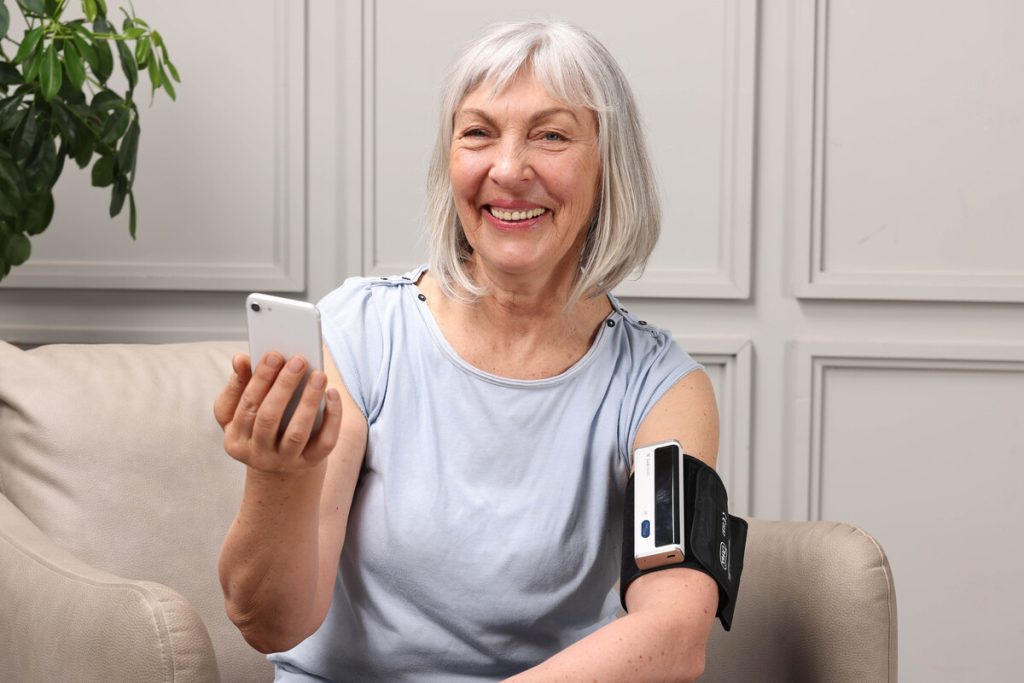
Several factors can affect the accuracy of blood pressure monitor readings. According to this article, some of them are cuff size and fit, proper positioning of the cuff at the heart level, movement during measurement, talking, or crossing the legs. Other factors include body posture, arm position, and the calibration and maintenance of the monitor itself.
Now, let’s explore some specific factors that can affect the accuracy of a blood pressure monitor, including cuff size and fit, calibration and maintenance, and user technique.
By understanding these factors, we can take the necessary steps to ensure reliable and accurate blood pressure measurements.
Cuff size and fit
Proper cuff size is crucial for accurate blood pressure measurements. The blood pressure cuff should fit the individual’s arm correctly to ensure an accurate reading. Using a cuff that is too small can result in artificially high blood pressure readings, while a blood pressure cuff that is too large may show false low readings.
Calibration and maintenance
Regular calibration and maintenance are vital for ensuring the accuracy of the blood pressure monitor. Calibration refers to the process of verifying and adjusting the monitor’s measurement accuracy against a known standard. Manufacturers usually provide recommendations for calibration intervals, which may vary depending on the model. Following these guidelines helps maintain the reliability of the monitor’s readings.
Additionally, proper maintenance, such as keeping the monitor clean, checking for any damage or wear, and replacing worn-out parts like upper arm cuffs or batteries, is essential. Failure to calibrate the monitor or neglecting maintenance can lead to inaccurate readings over time. Regular calibration and maintenance help ensure that the monitor remains accurate and reliable for consistent blood pressure measurements.
User technique
User technique plays a significant role in obtaining accurate blood pressure measurements. Proper positioning and posture are crucial during the measurement process. The user should sit comfortably with their feet flat on the floor, back supported, and arm resting on a surface at heart level. Incorrect positioning, such as crossing the legs, slouching, or not supporting the arm correctly, can impact the accuracy of the readings.
Additionally, the user should avoid talking or moving during the measurement, as this can introduce errors. It is important to follow the manufacturer’s instructions for the specific blood pressure monitor being used and receive guidance from healthcare professionals on proper technique. By following proper positioning and technique, users can help ensure more accurate blood pressure readings.
Tips for Accurate Blood Pressure Measurements
To get the most reliable blood pressure measurements, consider the following tips:
- Prepare for measurement: Avoid caffeine, tobacco, and exercise for at least 30 minutes before taking your blood pressure to ensure a more accurate reading.
- Proper positioning and posture: Sit in a comfortable chair with your back supported, feet flat on the floor, and arm resting on a surface at heart level. Maintain a relaxed and upright posture during the measurement.
- Ensure cuff placement: Position the cuff directly on bare skin, aligning the bottom edge of the cuff with the bend of your elbow. The cuff should fit snugly but not too tight. Improper cuff placement can lead to inaccurate measurements.
- Take multiple readings: For more accurate results, take multiple readings at different times throughout the day and on different days. Record the readings and calculate the average. Blood pressure monitors that store readings can be a great help with this.
- Relax and be still: Sit quietly for a few minutes before starting the measurement. Avoid talking or moving during the process, as it can affect the accuracy of the readings.
- Use the same arm consistently: Stick to using the same arm for blood pressure measurements to ensure consistency. Switching between arms may result in different readings.
- Follow manufacturer’s instructions: Read and follow the instructions provided by the manufacturer for your specific blood pressure monitor. Each device may have specific guidelines for accurate measurements.
By following these tips and maintaining a consistent measurement routine, you can improve the accuracy of your blood pressure readings. However, visiting the doctor’s office and consulting with healthcare professionals is always recommended for personalized guidance and to ensure proper monitoring of blood pressure levels.
Understanding Blood Pressure Readings and Hypertension
Understanding blood pressure readings and the state of hypertension is critical to monitoring and managing cardiovascular health. Blood pressure is typically expressed as two numbers: systolic pressure over diastolic pressure. Hypertension, commonly known as high blood pressure, occurs when blood pressure consistently exceeds normal levels.
Understanding these readings and their implications allows individuals and healthcare professionals to assess cardiovascular health, identify potential risks, and take appropriate measures for prevention and treatment.
We will further explore interpreting blood pressure numbers, the classification of hypertension, and the significance of accurate readings in effectively managing this condition.
Interpreting blood pressure numbers
Interpreting BP numbers involves understanding the two values provided: systolic and diastolic blood pressures. As explained by the American Heart Association, systolic pressure represents the force exerted on arterial walls when the heart contracts, while diastolic pressure represents the pressure when the heart is at rest between beats.
Typically, more emphasis is placed on systolic blood pressure (the first number) as a significant risk factor for cardiovascular disease, especially in people over the age of 50. This is because systolic blood pressure tends to rise progressively with age due to factors such as arterial stiffness, plaque buildup, and a higher prevalence of heart and vascular disease. Still, either an elevated systolic or diastolic blood pressure reading can be used to diagnose high blood pressure.
Classification of hypertension
Hypertension classification refers to the categorization of high blood pressure based on the severity of the condition. The classification helps healthcare professionals determine appropriate management strategies and treatment goals. The American Heart Association recognizes the following hypertension classification based on its guidelines:
- Normal blood pressure: Systolic pressure less than 120mmHg and diastolic pressure less than 80mmHg.
- Elevated blood pressure: Systolic pressure between 120 and 129mmHg and diastolic pressure less than 80mmHg.
- Hypertension Stage 1: Systolic pressure between 130 and 139mmHg or diastolic pressure between 80 and 89mmHg.
- Hypertension Stage 2: Systolic pressure of 140mmHg or higher or diastolic pressure of 90mmHg or higher.
Importance of accurate readings in managing hypertension
As claimed in the American Heart Association journal, regular BP monitoring is essential for diagnosing and effectively managing hypertension. Here are some key points highlighting the importance of accurate readings in hypertension management:
- Accurate diagnosis and treatment: Crucial for diagnosing hypertension correctly and managing associated complications.
- Treatment evaluation and adjustments: Regular monitoring helps assess medication and lifestyle effectiveness for maintaining target blood pressure levels.
- Risk assessment: Identifying cardiovascular risk by monitoring blood pressure regularly.
- Lifestyle modifications: Feedback on lifestyle choices to make informed decisions for better blood pressure control.
- Personal empowerment: Active involvement in managing hypertension through awareness and collaboration with healthcare professionals.
It is important to note that accurate blood pressure readings require proper measurement techniques and a reliable blood pressure monitor. For easy home blood pressure management, the Cardi Health Blood Pressure Monitor can come in handy. It is a smart blood pressure monitor that provides accurate readings and is a compact and affordable choice for your disease control.
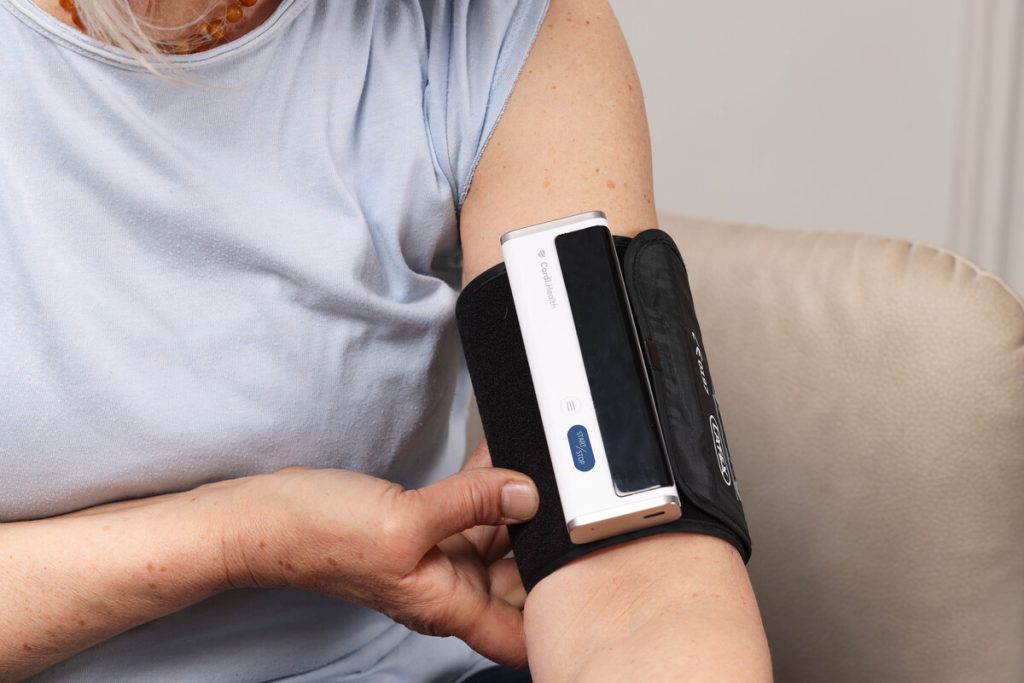
FAQ
What are the key features to look for in an accurate blood pressure monitor?
Key features to consider include ease of use, a cuff that fits the upper arm correctly, digital displays, and a memory function to store readings.
Are there different types of blood pressure monitors?
Yes, there are mainly two types: digital monitors, which are automatic and user-friendly, and manual (aneroid) monitors which require manual inflation and a stethoscope.
How can I ensure my blood pressure measurements are accurate?
For accurate readings, use an appropriately-sized cuff, measure in a calm environment, avoid stimulants or heavy meals 30 minutes prior, and ensure your arm is at heart level during the measurement.
How do I interpret my blood pressure readings?
Blood pressure readings consist of systolic (top number) and diastolic (bottom number) pressures. Readings below 120/80mmHg are considered normal, while higher readings may indicate elevated blood pressure or hypertension.
Most Accurate Blood Pressure Monitor: Key Takeaways
It is important to find the best blood pressure monitor for monitoring and managing high blood pressure. Today, there are many devices on the market, all claiming to be the best blood pressure monitors. It is essential to be cautious and make your choice wisely. The most important features to look for in the device are validation and certification, irregular heartbeat detection, multiple readings and averaging, and Bluetooth and mobile connectivity.
There is also a lot of other information you need to know for managing high blood pressure at home, such as factors affecting blood pressure monitor accuracy and how to read the blood pressure measurements. They are essential to ensure the best and most accurate readings at home.
Related articles
Best Foods to Lower Cholesterol
Does Caffeine Raise Blood Pressure?
Does Drinking Water Lower Blood Pressure?
Causes of High Blood Pressure at Night
10 DASH Diet Breakfasts for a Healthy Start
Heart-Healthy Diet Guide
What Should an 85-Year-Old Blood Pressure Be?
What is Normal Blood Pressure for a 70-Year-Old?
How to Read Blood Pressure: A Comprehensive Guide
Manage your heart health now
Find out what works best for you with this 60sec quiz and get your personalized heart health plan.

